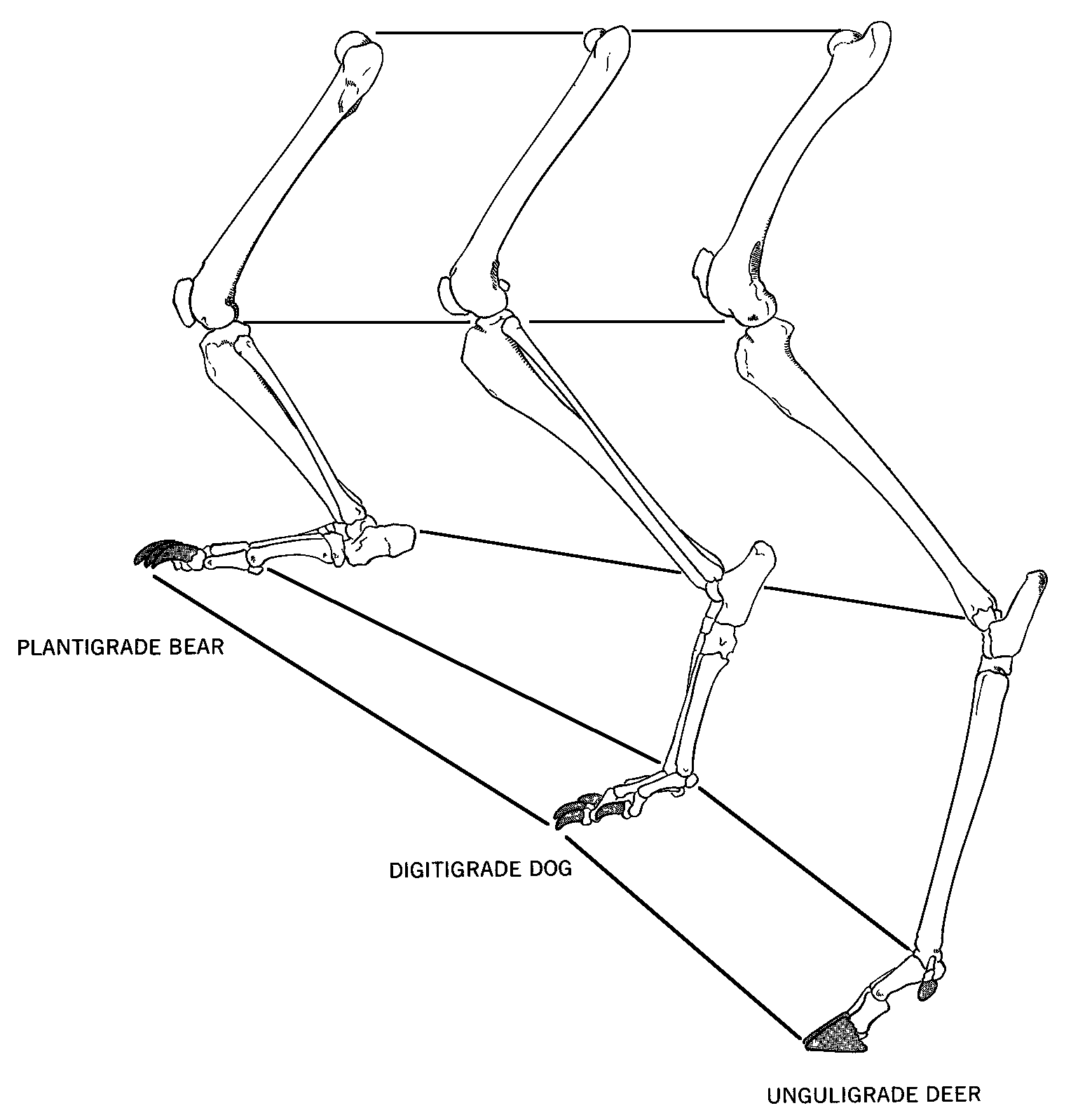
| MadSci Network: Zoology |
Why are animals better at jumping?
First, we have to make a distinction between jumping ability that is due purely to biomechanical capability and jumping ability that is due to skill. There will always be a little bit of both involved, but skill can make up for a lot.
I look at my cat, and note that she stands about 6 inches at the shoulder, but seems to be able to accomplish 4 foot vertical leaps onto the kitchen countertops. That's eight times as tall as she is! How is this possible? Careful observation shows that a lot of skill is the answer. My cat will rear up on her hindlimbs and stretch out her body as she jumps. With her body stretched and her forepaws extended, she really only needs to jump about one foot. In the rest of the "jump" she is actually pulling he body onto the higher surface. So, although it looks like she jumped 8 times her height, she really only jumped about twice her height (which is till impressive, but starts to seem a little more reasonable). So, a lot of the impressive jumping action you see among animals is skill.
Still, some animals are better jumpers than others no matter how skillful they are. Why is this? In your question, you mentioned that the good jumpers seem to have "three sectioned legs" while the poor jumpers have "two sectioned legs." Your observation here is very astute, although your terminology is wrong. All mammals, all vertebrates, are built upon the same body plan. That means that their limbs are created with one long bone near the body (the humerus or femur), the bones in the next limb segment (radius & ulna or tibia & fibula) a series of wrist or ankle bones (carpals or tarsals), then the hand or foot bones (metacarpals or metatarsals) [see illustration from Hildebrand (1982) p. 442].

Although all mammals have the same limb parts, they are put together in different ways. The lengths of the limb elements support the body, but they also act as levers for propulsion. Animals can increase the lever length of their limbs by elevating their wrist, or ankle, and increasing the length of the foot bones. These changes effectively re-arrange the lever ratios in such a way that an animal can be built for speed (like a horse) or for heavy body support (like an elephant), or for energetic efficiency (like a dog) or for powerful bursts of activity (like a jumping cat). The changing emphasis on different bone lengths changes an animal's biomechanical ability much like the sequence of gears in a car's crankcase will change its performance. Everything in biology is a trade-off. Those animals that can't jump very well can probably run faster, or longer, as a result. References: Hildebrand, M (1982) Analysis of Vertebrate Structure. John Wiley & Sons: New York Howell, AB (1944) Speed in animals: Their specializations for running and leaping. University of Chicago Press: Chicago. Schmidt-Nielsen, K (1984) Scaling: Why is animal size so important? Cambridge University Press: New York
Try the links in the MadSci Library for more information on Zoology.